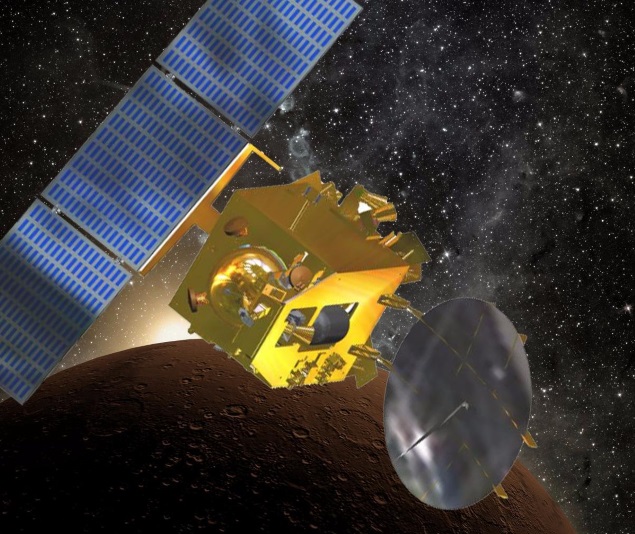
Orbiting around Mars since September 24, 2014, the 1,340-kg spacecraft is on an extended life after completing the six-month intended lifespan on March 24 by conserving the remaining fuel (37kg) on board.
“As eclipses or blackouts are a cosmic phenomenon in the solar system, no cause for concern as the Orbiter has been put on autonomous mode in advance by sending the required commands from here to survive the eclipse phase,” the official asserted.
Admitting that it was first time when the deep space network at Baylalu, about 30km from Bengaluru, would be out of touch with the Orbiter for such a long time, the official said the spacecraft had been equipped and programmed to undergo the transition.
“Though our command network will not receive or send any signal during the blackout, we will regain control over the spacecraft after it comes out of the Martian shadow to contact us again,” the official said.
The space agency’s track and command network centre in the city had tested the spacecraft’s ability to survive a solar eclipse by simulating the conditions earlier.
“As the Oribter is on a borrowed life, its longevity and ability to keep spinning around Mars at a safe distance from its hot red surface is a windfall for us,” the official added.
India created history by becoming the first country to enter the Mars orbit in maiden attempt after a nine-month voyage through the inter-planetary space from the Earth.
India also became the first Asian country to have entered the Mars sphere of influence (gravity) on maiden attempt, as a similar mission by China failed in 2011.
The $70-million (Rs.450-crore) Mars mission was launched on November 5, 2013, on board a polar rocket from Isro’s spaceport Sriharikota off the Bay of Bengal, about 80 km northeast of Chennai.
When launched, Orbiter had 855kg fuel but consumed about 800kg since then (November 5) for its orbit-raising exercises undertaken during its nine-month long journey and on entering the Martian sphere.
“The five scientific instruments on board the spacecraft (Orbiter) will continue to collect data and relay them after June 22 to our earth stations for analysis,” the official said.
Of the five payloads (instruments) on board, Mars Colour Camera (MCC) has been the most active, taking stunning images of the Red Planet’s surface and its surroundings, including valleys, mountains, craters, clouds and dust storms.
“The camera has beamed many breathtaking pictures of the Martian surface and its weather patterns such as duststorms. We have uploaded some pictures on our website (www.isro.gov.in) and our Facebook account for viewing,” he pointed out.
The other four instruments have been conducting various experiments to study the Martian surface, its rich mineral composition and scan its atmosphere for methane gas to know if it can support life.
“As methane is an indicator of past life on Mars, the sensor is looking for its presence in the Martian orbit. If available, we will know its source in terms of biology and geology. The thermal infrared sensor will find out if the gas is from geological origin,” the official added.
Scientists at the mission control centre in Bengaluru monitor the orbital movement of the spacecraft around Mars and check health of its instruments round the clock.
Orbiter takes 3.2 earth days or 72 hours, 51 minutes and 51 seconds to go around Mars once while orbiting at a distance of 500km nearest and over 80,000km farthest from its red surface.
[“source-gadgets.ndtv.com”]







